Semantic Search is the way users act on the Search Engine according to the semantic meaning relationships of words and concepts. The content of a concept or entity combines with other meanings and concepts at different points to form a Semantic Hierarchy of Meaning. Search Engines such as Google, Bing, and Yandex put frequently searched or asked questions and queries about a certain concept in a Semantic structure. This semantic query network is fed by user behavior. Thus, a SERP Design is created in which more organized, logical, and relevant information is interconnected. Semantic Search is linked to the meanings of words as well as to grammatical rules and the way words characterize each other. In this context, even if a sentence is grammatically correct, if its meaning is weak, the sentence is not suitable for the Semantic Search structure.
“One morning, I have seen an eagle while running on a horse in my suit.” In this sentence, it is not clear grammatically exactly who the runner is or who is in the suit. However, we can make this inference with the meaning bond that words have. Search Engines adapt to the Semantic Search structure by extracting these links, the meanings of words, and their semantic links with Natural Language Processing, and using them on the Web with Machine Learning Models.
Lexical Search Engines and Semantic Search Relation
Search Engines treat words in two different ways “phrase-based” or “string” or “entity-based” meaning. Sometimes different “strings” are included in the same “entity”. Words with the same meaning in different languages are thus combined at the same point, even if they are spoken in different ways. Microsoft Bing, Google, Yahoo, Yandex, DuckDuckGo, and other Search Engines were just “Lexical”. That is, they were looking at whether a word in the user’s query was in a corpus. During these periods, concepts such as the length of content or keyword density were still important. Search Engines give importance to the meaning and conceptual links of words as much as “string matching”. Search Engines, such as Google, know the connection of a particular concept to another and have a Knowledge Base for it and create a Knowledge Graph for, a better understanding of search intent.
Thus, the Lexical Search Search Engine feature has been renewed with the Semantic Search Engine or Structured Search Engine feature. Below, the algorithm capabilities of a Lexical Search Engine and Entity-based Search Engine are compared. A Lexical Search Engine performs the following calculation if a user has entered the “Electricity Saving” query in the search bar.
- Does Corpus have the word “Electricity Saving”?
- Does Corpus “Electricity Saving” have items such as URL, Heading, First Paragraph, Breadcrumb, Meta Tag?
- Does Corpus have other words often used with Electricity Saving?
- Does Corpus have other words that mean Electricity Saving?
- When methods such as Corpus, Word2vec, and N-Gram Analysis or TF-IDF Analysis are applied, is the word “Electricity Saving” central?
An Entity-based Search Engine performs a calculation like this.
- What information do users most often wonder about Electricity Saving?
- What are other questions about Electricity Saving?
- Are other concepts related to Electricity and Saving Concepts included in the corpus?
- Are there any grammatical mistakes?
- Does the Corpus have enough specialist knowledge?
- Corpus author, is an entity expert on the subject?
- Is Corpus’ publisher the authority on this matter?
- Does Corpus include related side search intentions and other related concepts, as well as the source that publishes Corpus?
Anatomy of Semantic Search and Meaning of Words
Semantic Search means using words with their meanings in search. Semantic Search means understanding the query and not focusing on just one string or literal matching situation. It is the execution of Information Retrieval Methods with the meanings of words and all relevant aspects of a topic in a logical order in search results.
Semantic Search aims to go beyond the dictionary meaning of a word and understand the user’s search intent. With the emergence of the Semantic Search Concept, the number of long-tail queries in Google and other Search Engines has increased and the amount of content produced to meet such queries has also increased. Thus, a structure has emerged where more content is presented in a more organized structure, and it is easier for the Search Engine to scan and index, and see the relationship between each other. Semantic Search and Semantic SEO are related concepts in this context. Semantic SEO aims to make a website have a Semantic content network by looking at the connection between concepts. Thus, a website suitable for Neural Network and Search Engine Information Organization structure is created. While Semantic SEO deals with all aspects of a subject, instead of queries, it focuses on concepts and the content of those concepts, that is, the harmony of the subject and search queries, and the search intention.
In the Semantic Search structure, the “How do I learn to write code” and “Tips for learning to code” queries are the same queries. Lexical Search Engines, on the other hand, are completely different queries. Therefore, it is the most natural feature of Semantic Search to focus on a user’s “intent” and create a page design, function, and content network accordingly, and provide the necessary semantic editing and connection with the user.
Semantic Search Engines and Their Query Understanding Capacity
If the question “who” is asked in a query, Google knows that the relevant result page will contain “a personality”. If the word “dancer” is mentioned in a query, Google also knows that the person concerned will be a dancer or has a relationship with a dancer. Search Engines such as Google and Bing save billions of “facts” and “millions of entities” in their Knowledge Base. While recording the connection and direction of each entity with each other; Entity-seeking Queries, Canonical Queries, and Query Rewriting methods deliver the information they seek to users in the most comprehensive and accurate format.
Some concepts related to Semantic Search Engine are briefly explained below.
- Entity-seeking Query is a query that searches for a specific entity.
- Canonical Query is the expression of a main query and search intent in different ways.
- Query Rewriting is the calculation of different variants of a query and the Semantic Search Engine rewriting it and presenting the relevant results to the user.
- Dominant Search Intent and Subintent are intent types that are more than one in a query.
If you ask Google the question “What is cancer?”, you will see a result from the website with the most comprehensive content about cancer.
The relevant results page explains the cancer treatment, its types, symptoms, causes, and history in broad aspects and contains various links to categories with related sub-topics. Semantic Web and Semantic Search reward quality content writers with a certain depth. If you enter the query “Who was the wife of 36th President of the United States of America” on Google, you will see that Google gives the exact best matching result.
Because they extract facts as entity attributes and the 36th US President is an attribution of the Lyndon B. Johnson, and the “wife” term is also another for Lyndon B. Johnson. Claudia Alta or “Lady Bird” is another entity attribution and also it is directly another entity. Google creates these connections, and profiles, and search behavior patterns along with the information on the web for better-organized Search Results.
If you enter the query “who is the dancer in Beyonce already video” on Google, you will see that Google pulls the relevant response from the relevant content, highlights it, and places the relevant image in the snippet.
At this point, words bolded in black even in Description will change according to the character of the query and the links of the searched entities. If you searched for “dancer”, his name will be marked in bold and the attribute of the searched person and the other prominent entity in the query will be marked in bold.
Google understands content with the Knowledge Base it has created using NLP and Fact Extracting methods and creates a Semantic SERP by using the Semantic Search features according to the quality of the content and the content publisher’s reliability, authority, and expertise values. Likewise, the “how tall is the Eiffel Tower” question will give the exact answer because Eiffel Tower is an entity in the Knowledge Base with the “tall” attribution. If the content has wrong information about this fact, it will probably hurt the source’s reliability from the Search Engine’s perspective.
Knowledge Graph, BERT, RankBrain, Neural Matching, and Semantic Search
When Google announced the Knowledge Graph in 2012, it began profiling people, songs, places, countries, nations, occurrences, and everything in an appropriate format with relevant information and facts, using semantic relationships. With the Bidirectional Encoder Representations of Transformers (BERT) Algorithm, it started to read the content from right to left and left to right, and it began to better match the relevant queries and content. Neural Matching algorithms that perform Query / Document matching by measuring what a query means and which intents a content will meet better. RankBrain measures whether a document can provide successful and reliable Search Satisfaction in a query. With all these and similar concepts, Google and Other Search Engines are building the Semantic Search and Semantic Web World better every day.
Why do Search Engines Pursue Semantic Search?
Semantic Search is the Search Ecosystem that knows that similar queries will display similar search behaviors with similar search intents, thanks to the fact that concepts are linked to each other in a specific context. Therefore, a Search Engine knows that websites with authority over certain types of topic hierarchy, concept link, and semantic search elements can handle all similar queries authoritatively. Thus, a Search Engine can spend less computation, crawling, indexing, and ranking resources for creating the best possible Search Engine Results Page. With Search Engines bringing the websites to the fore with the right context, content format, and content type in certain semantic queries, it is easier for users to predict the queries that are likely to search in the future or that may be of interest.
Thus, a more consistent, regular, and meaningful Search Engine Results Page Network is created for both users and search engines. Semantic Search is also an Entity-based Search Engine. By applying the rules of Natural Language Processing, and Natural Language Understanding, the meanings of the concepts, their contents, and the quality and context of the documents can be better matched.

With Semantic Search, it is also easier for users to perform auto-prediction as it is easier for the Search Engine to predict their queries. People Also Ask, Knowledge Panels, Location Packs, and Image Packs, Image Query Refinement Bubbles are also results of the Semantic Search. Semantic Search makes it easier for users to find relevant concepts while reducing the number of resources required for Search Engines to deliver quality results pages to the user.
Many searches are unintentionally ambiguous
People have different search intents with the same words. They are looking for different things with the same queries. One out of every 10 queries has a typo. When the same word is searched for, the type or format of the content that the user wants to see may change. Therefore, Search Engine has different concepts such as “Query Rewrite”, “Dominant Search Intent”, “Canonical Query”, and “Sub Search Intents”.
It is possible to handle a query in more than one way and to create the most suitable SERP by performing many experiments. but with Semantic Search, it is possible for Search Engines to make all existing predictions easier. Because, with the transition of the Search Engine Results Page to a completely Semantic structure, the communication between the Search Engine and the user has been strengthened. Therefore, the user has switched to “I did not enter a meaningful query enough” instead of “Google did not give what I was looking for”. Humans are semantic by nature. Semantic things produce meaning faster and become noticeable to humans. Therefore, the fact that Search Engine is semantic has enabled it to communicate with the search engine user more easily. And it pushed the user to use the information he was looking for more clearly and by specifying its context.
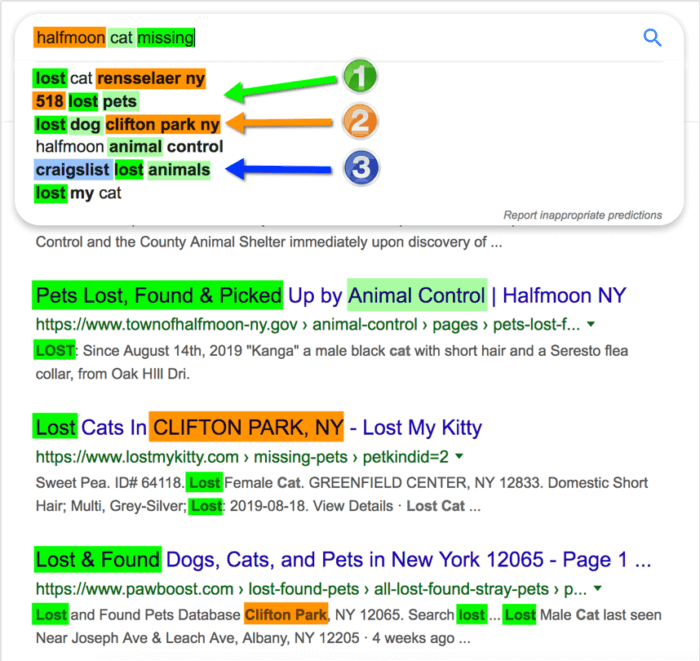
The need to reflect personal interests and trends
Semantic Search also makes it easier to understand trends and search demand differences in search queries. People use the search engine with specific queries based on specific interests. Probably, each user can search on Google or other Search Engines for something that nobody has searched before, even once in their life. Semantic is a feature that can be applied to any point and entity that exists. For this reason, by tracking a person’s personal interests by the “Personal Search Engine”, the interests of the user also become “semantic”. Thus, it becomes easier to notice different “sub-topics” or different “sub-contexts” of the topics that are very close to each other.
Regardless of the type of an entity, if it is trending suddenly or if everyone is starting to be interested in it, the amount of content and query demand produced according to the type of that entity and the reason for being trending increases at the same time. Search Engine manages to crawl and index resources with the algorithms it has created to manage this need in the best way. The reason why an entity trends by its type is also semantic. An entity is a different trend such as “having a child”, “divorce”, “getting a promotion”, “receiving an award” or a “scandal” if it is a person, or “laws”, “political statements” if an entity is a country. there may be reasons for the increase.
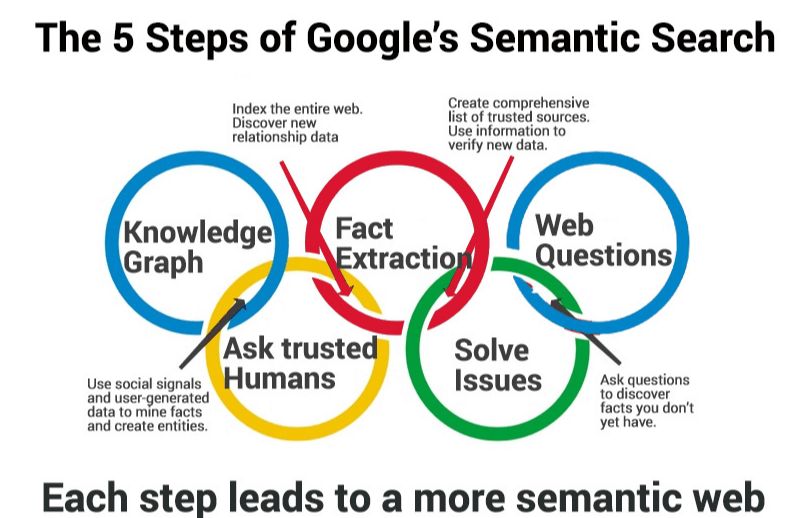
All these entities are semantically linked to each other within certain networks. The way each entity can be trended is also determined in the semantic structure. Therefore, experiencing personal interests and sudden search-demand differences does not mean experiencing an unexpected point for Search Engines. On the contrary, it is possible for Semantic Search Engine to predict what type of content can be written in which format and with which entities. Therefore, when using crawling, indexing, and ranking resources in the relevant “topical hierarchy”, while using the most authoritative domains for the most relevant user group, it is also clear how the Search Engine Results Page should be changed according to the Dominant Search Intent.
The Need to Understand Lexical Hierarchy and Entity Relationships
Lexical Hierarchy is related to the Lexical Semantics and Hierarchical Lexical Relations of lexical units. Lexical Hierarchy can help Search Engines to understand the structure of a language, content, paragraph, sentence, and angle of a large amount of corpus. Lexical Semantics is called Lexicosemantics. Lexical Semantics and Lexical Hierarchy examine the relationships of words with each other. Some, Lexical Hierarchy examination examples are below.
- Grouping, categorizing and profiling the lexical items.
- Differences and similarities between lexical items for different languages.
- Lexical Meaning changes for the syntax of language and context.
Lexical Hierarchy occurs from lexical items. A lexical item can be a lexical unit which is a compound word, a stop word, or just a root word. Lexical units can also be attached to suffixes, prefixes, or any kind of affixes. If the lexical items are attached to an affix, it are called “bound morphemes”. If it is not bound to affixes, it means that the lexical unit is a “free morphemes.”
Lexical Hierarchy Forms can be grouped as below.
- Hyponymy and hypernymy
- Synonymy
- Antonymy
- Homonymy
- Polysemy
- Semantic networks
Understanding the relational semantics between Lexical Units helps Search Engines to understand the content on the web better.
Dynamic Organization of SERP for Multi-faceted Search Behavior
Dynamic Organization of SERP for Multi-faceted Search Behavior
Dynamic Organization of SERP means changing the Search Engine Results Pages’ shape, layout, and components according to the Search Intent Types. If a user searches for a query that is sensitive to “local search intent”, the SERP can include “local businesses”, “map results”, “visitor comments”, and local business web pages. If a query is “time-sensitive”, the SERP can include periodic themes for the user. For instance, if the query is a “winder-focused” query, the SERP can include “places for visiting during the winter”, “or things to do within winter”.
Google always tried to “diversify the Search Results Page” according to the user profiles, search intent types, search behavior patterns, search demand fluctuations, and latest news, events, and changes.
Multi-faceted Search Behavior and Demand forced the Search Engines to use “query refinement bubbles” and also “search context refinement sidebar”. You can see “semantic query refinement bubbles” from Google below.

You can see the “search context refinement sidebar” or “Dynamic Content of SERP” example from Google.
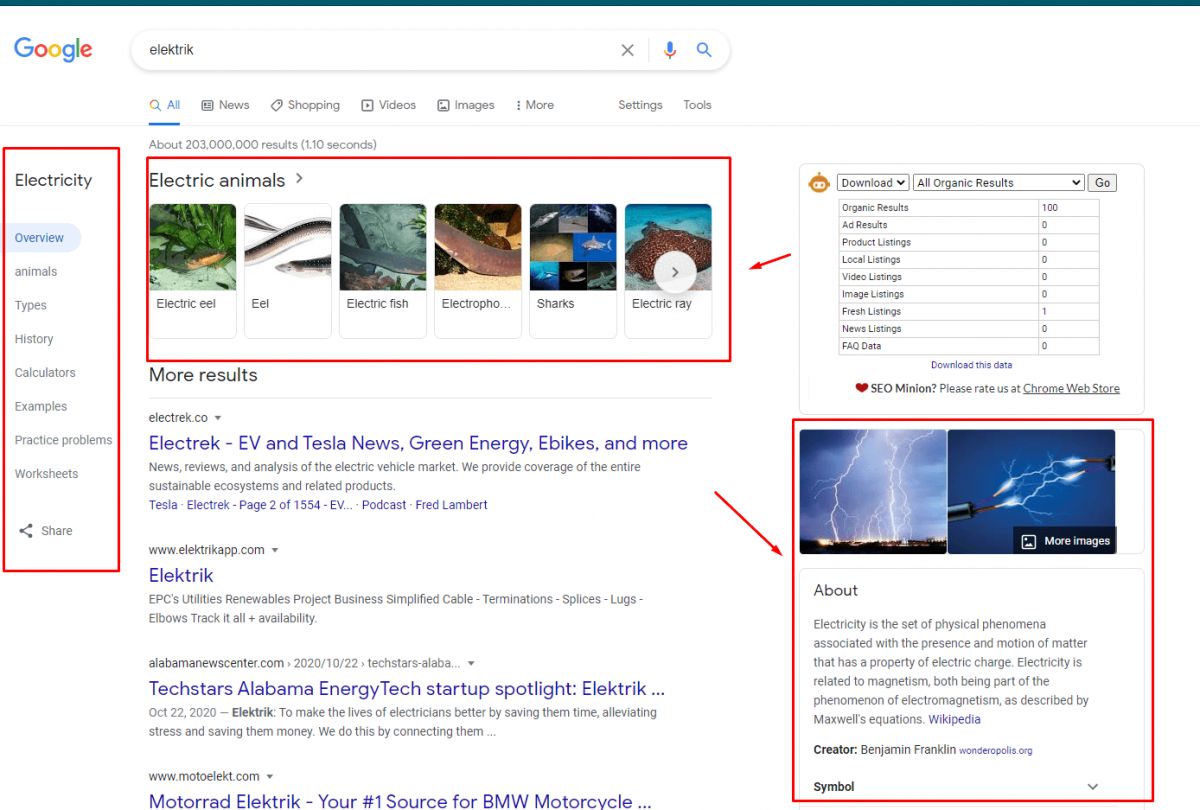
You can see “search context refinement sidebar” or “Dynamic Content of SERP” example from Bing below.
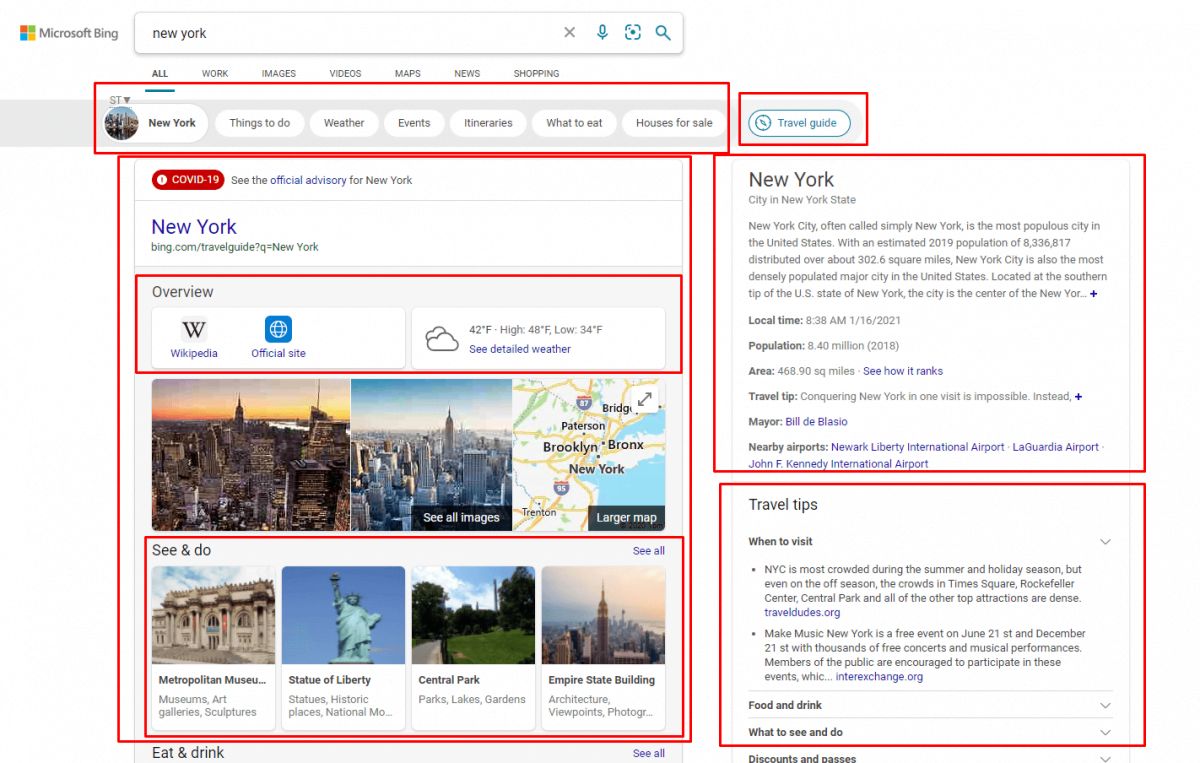
Dynamic Content of SERP and Search Context Refinement Sidebar shows that Search Engines group the content on the web according to their context, not just their content. Thus, creating different verticals for different contexts within the SERP lets Search Engines show more configured content for the users according to their most possible search intents and behaviors.
Instead of choosing the “dominant search intent” and “most dominant source for a specific topic”, diversifying the SERP with different contexts can help Search Engines to serve more content. And it lets users stay more within the SERP along with giving more chances to be more visible on the SERP for content publishers. Lastly, Dynamic Content on the SERP incentives content creators to create more diversified content within “contextual relationships” in a semantic way.
Thus, a Semantic Search Engine makes users search for semantic relationships while incentives the content creators to be more semantic for their websites. The semantic Web is less costly to be crawled than a chaotic web.
Semantic Search Principles
Semantic Search has principles being shaped by the nature of Semantics. In a Semantic Web, everything should be connected to another thing within a context with descriptive data dimensions. These data dimensions can be time, type, genre, length, weight, height, gender, nationality, job, event, place, or color. Everything has a place within a Semantic World Perception. Thus, Semantic Search Principles organize the web for semantic search behaviors.
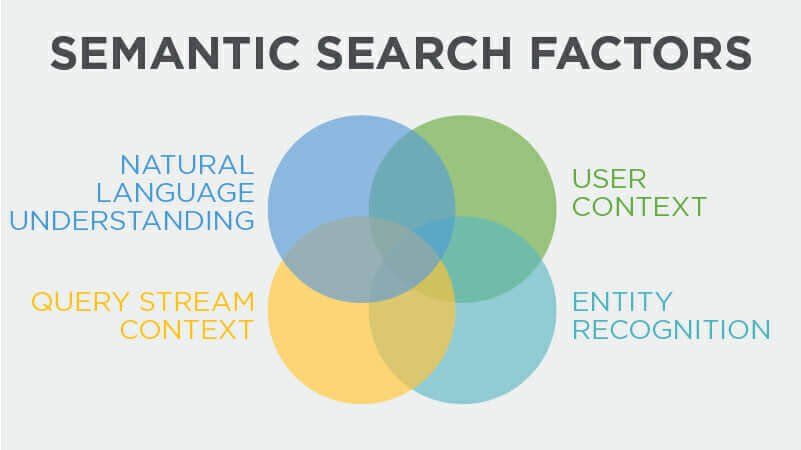
Crawling, evaluating, and understanding the Semantic Web is way much easier than the chaotic web. Thus, Semantic Search Principles let Search Engines be more cost-effective, faster, and result-oriented for organizing the information on the web. Semantic Search Principles exist for users, content publishers, and also Search Engines.
Semantic Search principles can unite users, search engines, and content publishers on a logical ground to act within harmony. Aligning the users’, content publishers’, and search engines’ perceptions on the web will create a more focused and easy-to-navigate environment on the web.
Semantic Search Principles are being preferred by Search Engines thanks to their contribution to the organization of information and aligning the perception and usage of the web.
Voice Search
Voice Search is being supported by Natural Language Processing Algorithms. Google, Bing, and other Search Engines extract the necessary information for a user from a web page and present it as an answer with a voice. Voice Search is being used more and more every year. Google, Bing, Yandex, DuckDuckGo, or other Search Engines don’t share the related data for Voice Search Activity, but we know why the users use voice search.
Voice Search is part of an “Eye-free search” behavior. Without seeing, with just voice commands a user can reach out for the information, service, or function that he/she needs from the web. To perform this, the voice search should be organized in a semantic structure. Because every question that can be asked on the web has a different form. But it can be unified and canonicalized within the best possible semantic form.
Every semantic question is easier to be matched with a semantic answer. Thus, answering the semantic questions via voice search can succeed easier with the Structured Data and Structured Content within a semantic logic.
Featured Snippets and Rich Results
Rich Results and Featured Snippets are being created thanks to Semantic Search and Natural Language Processing Algorithms. Rich Results uses “Structured Data” within Microdata, JSON-LD (JavaScript Object Notation Linked Data) for entities and their attributions. Featured Snippets use Natural Language Processing technologies such as “Part of Speech Tag”, “Named Entity Recognition“, “Dependency Tree”, and “Sentiment Analysis”. Featured Snippets and Rich Results are being used for voice search also. Thus, we can simply say that Semantic Web, Semantic Search, and Semantic SEO are shaping the state-of-the-art technologies for the Search Engine together.
According to the different content and query types, there are different featured snippets and rich results. A featured snippet can be extracted from an HTML Table or any other Semantic HTML Element along with a Semantic Content Structure. The same types of queries require the same types of answers regarding content and content format. Rich Results help Search Engines to understand more complex content types such as Recipes, Events, How to Content, and more complex dimensions within a semantic manner.
Why is Semantic Search Important for SEO?
Semantic Search and Semantic SEO are related concepts. Semantic SEO includes Semantic Search Behavior Semantic Indexing, and Semantic Ranking. Semantic SEO is the management of an SEO Project by being aware of the Semantic and Structured Search Engine features of the Search Engine, knowing what type of website, URL and Breadcrumb Categorization, and Internal Link Network you want to see for which type of query network. Content format, content type, context, and page design are likewise organized in the context of the Semantic SEO Concept.
Which Google technologies play a role in how semantic search works?
Google has prepared new technologies to improve the Semantic Search and Semantic Web. The technologies that are being used for Semantic Search by Google are Knowledge Graph, Hummingbird, RankBrain, and BERT.
Knowledge Graph
A Knowledge Graph includes entities with descriptions and dimensions that are interlinked to each other within a context. Knowledge Graphs help to understand the content on the web regarding relevancy, quality, and information capacity. Knowledge Graphs also can help to understand the accuracy of the content. Web pages with consistent information help Search Engines to understand real-world entities and improve their database related to these entities.
Google Knowledge Graph has been launched in May 2012 with the motto of “Things, not strings”. In the beginning, Google Knowledge Graph included 570 million entities and 6 billion facts about these entity connections. In 2020, Google has 500 million facts and 70 billion entities in the Knowledge Graph.

To learn how to use Google Knowledge Graph API with Python for SEO and understand the Search Engine’s perception, you can read our related guidelines.
Hummingbird
Google Hummingbird Algorithm is for detecting and including the connections between queries within a context for satisfying future search behaviors in a better way. Google Hummingbird algorithm has been launched on Google’s fifteenth anniversary in 2013. Hummingbird Algorithm lets Google use Machine Learning for organizing the queries and search intent. With the Hummingbird Algorithm, Google started to focus on “sentences” instead of just words. Thus, with time Google started to match search intent and documents for longer queries in a better way.
With time, the “keyword density” or similar criteria has been lost thanks to Hummingbird. The hummingbird Algorithm also helps to reconcile the synonyms and similar queries for matching the search intent. Thus, Google started to prefer long-form content with better comprehensivity and more information in time. Because long-form content has more “related words” and “synonyms”, they have more “semantic queries” and “related information” for the search intent. Thus, with fewer pages, Google has created a more effective Search Engine Results Page. Today, with the help of Hummingbird, Google diversifies the SERP with the same form of content for a different context.
RankBrain
RankBrain is a Google algorithm based on Artificial Intelligence. According to Google, RankBrain is the third most important ranking factor. RankBrain is being used for understanding and relating the new queries to the user queries in the past. Thus, Google can protect the Semantic Structure of the Web, since new queries are similar to the old queries. New web pages and new queries can be organized with the same Semantic Search Principles.
RankBrain is to understand first instance queries and relate these queries with concepts and related phrases, and synonyms. Related terms and synonyms within a contextual relevance help to create a more Semantic Search and Web.
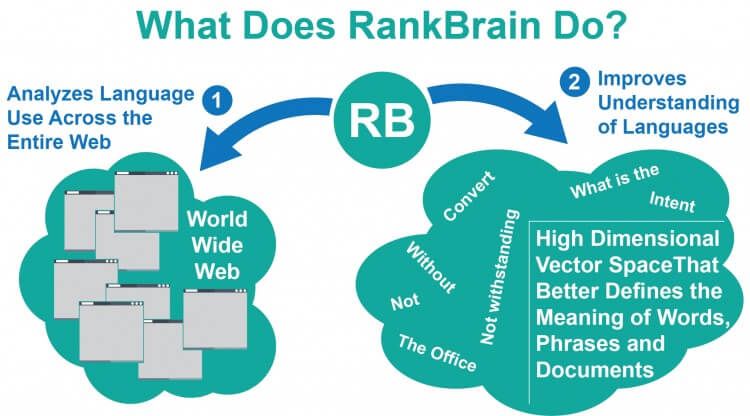
BERT
BERT (Bidirectional Encoder Representations from Transformers) is the new algorithm of Google to understand the content, extract the information within the content, and detect the entities, and entity relations. BERT performs Natural Language Processing from left to right and right to left, reading the content. Thus, it increases the accuracy of NLP Results for content blocks that are shorter than 512 tokens. After BERT, Google has started to understand the content better, especially for longer queries. Google started to create better Semantic Search Results for longer queries.
Neural Matching
Neural Matching is for matching the query of the user, information from the documents, and search intent. Neural Matching and RankBrain work in harmony. RankBrain understands the relevance of different queries to match the Search Intent, while Neural Matching matches the search intent, query, and the documents on the web.
Matching questions, queries, and search intent help to create a more Semantic Web and Search ecosystem.
Last Thoughts on Semantic Search, Semantic Search Behavior, and Structured Search Engine along with Holistic SEO
Semantic Search, Semantic SEO, and Semantic Behavior, Structured Search Engine are related content to each other. To perform Semantic SEO Projects, Semantic Search should be understood by an SEO. Semantic SEO Case Studies and Principles will be increased over time. More and more SEOs will recognize that Semantic Search is the dominant shape of search behaviors. Thus, understanding the Semantic Organization of the Information on the Web is important. For Holistic SEO, understanding, and using Natural Language Processing for SEO is important. Every sentence and sentence structure can reflect a content’s expertise to the Search Engine. The search engine has millions of documents within its memory, and it has millions of user behavior patterns for these documents within the vector shape. Thus, just by looking at new content, the Search Engine can understand the content’s expertise, and user-satisfying possibilities easily. Natural Language Processing rules and algorithms help SEOs and Search Engines understand the content’s expertise and capacity.
- Sliding Window - August 12, 2024
- B2P Marketing: How it Works, Benefits, and Strategies - April 26, 2024
- SEO for Casino Websites: A SEO Case Study for the Bet and Gamble Industry - February 5, 2024
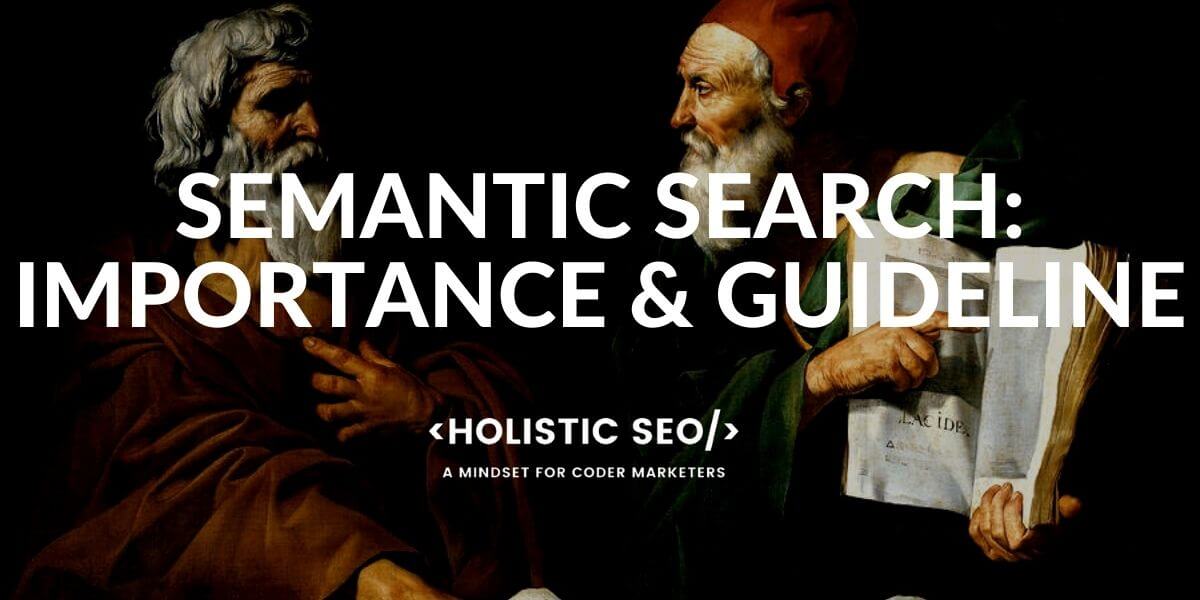


Excellent, thanks for the unique information that you write here.
I will implement the sum of your approach, and I look forward to reading more articles from you.
Thank you so much, Gill! Happy to help.
Thanks for sharing this valuable content with us.
Thanks for commenting, and supporting, Suraj!
This is a great article! Google is certainly getting better at semantic search, but I’m curious how far they can go considering their business model is a bit at odds with relevancy (buying placement). Chat GPT will likely have some implications as well as lots of blogs start to spam content.
I wonder if new semantic search/search players like Neeva.com, Shopdeft.com, You.com, etc. can catch up in the event that Google doesn’t deal with these problems fast enough.
Hello Mika,
Thank you for your kind comment. Google has the biggest and strongest language models such as PaLM, or GLaM, which they announced, but they didn’t create the products yet.
The computational and algorithmic base threshold for creating a new search engine is decreased. Because, now we are able to use simple NLP models to evaluate text, and even we can create a search engine if we have a proper data center, crawler, and indexer, server. Thus, we will see more and more search engines.
But, in reality, Google has Chrome, Gmail, YouTube, DNS, Drive, Surveys, Forms, Sheets, Docs, Maps, and many other products that help them to keep users in their own ecosystem. They already launched LaMDA, and Imagen for dialogue systems and image generation, but they just didn’t create a product with it. To understand the obstacles for spamming Google with ChatGPT, you can check this article: https://www.holisticseo.digital/theoretical-seo/google-author
I came across your post and found it enlightening. Every day, when I read content from different blogs, I’m presented with new challenges. It’s always invigorating to learn from other writers and to try incorporating some of their techniques into my own work. Would it be alright if I use some of your content in my blog? Of course, I will ensure to credit you and provide a link back to your website. Thank you for sharing.
Great article. Just starting to understand the topic but your content (video and blogposts) help alot!
Happy to help always.
It is finally nice to see all the algorithms that have been coming out over the years finally come together. It makes more sense now than it did as each piece was released individually. Now with the bigger picture being one instead of many individual smaller pieces we can finally get to fully utilize semantics within the semantic web as the web was intended to be used.
Just on a side question here:
What do you think of You com and Perplexity? Do you think they have enough grit to play in the semantic field?
Thank you, Brian.
Hi
Thanks for your article but I have questions?
What’s meaning those words,
phrase-based, entity-based,string and what’s different?
Search Engines treat words in two different ways “phrase-based” or “string” or “entity-based” meaning. Sometimes different “strings” are included in the same “entity”.